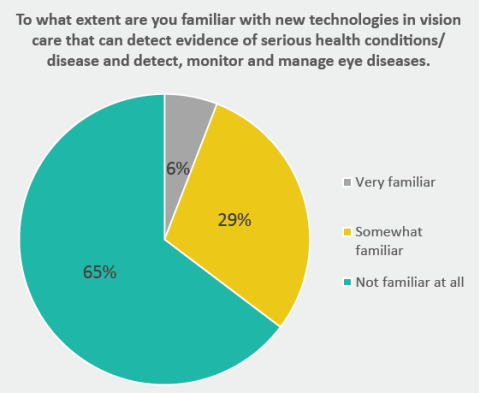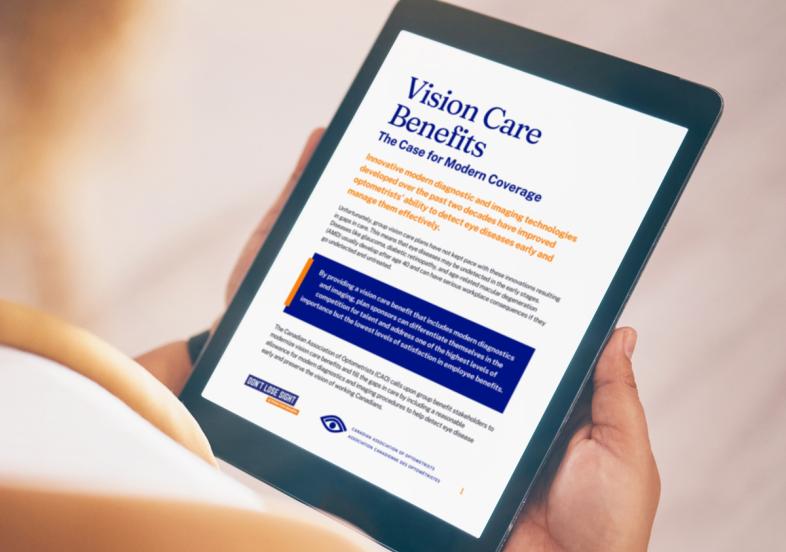According to Dr. Bohnsack, by 2030 vision loss will cost $30 billion annually, the highest direct health care costs of any disease category in Canada, 75% of which is treatable or preventable. Current vision care plan design does not support sufficient reimbursement to achieve otherwise attainable treatment and prevention levels.
Visual field tests and retinal imaging help optometrists diagnose eye disease early, thereby reducing the risk of permanent vision loss and reducing disability.
Diabetes, age related macular degeneration (AMD), dry eye and glaucoma are ‘the big four’ diseases that threaten vision. These diseases can first present somewhere between the ages of 40 to 55, affecting employees in their prime working years, and should be of particular concern to plan sponsors.
The Canadian Association of Optometrists issued a Best Practices Guide for Vision Care Benefits in 2020. The recommendations in the Guide propose changes to current vision care and extended health plan design that result in modest increases in health care premiums and ensure comprehensive coverage for diagnosis and treatment of eye disease earlier in their progression.
Attendees at Dr. Bohnsack’s February 2021 presentation were receptive to his insightful presentation. Eighty four percent of respondents rated the need for vision care changes as one of their top three takeaways from the morning session.

